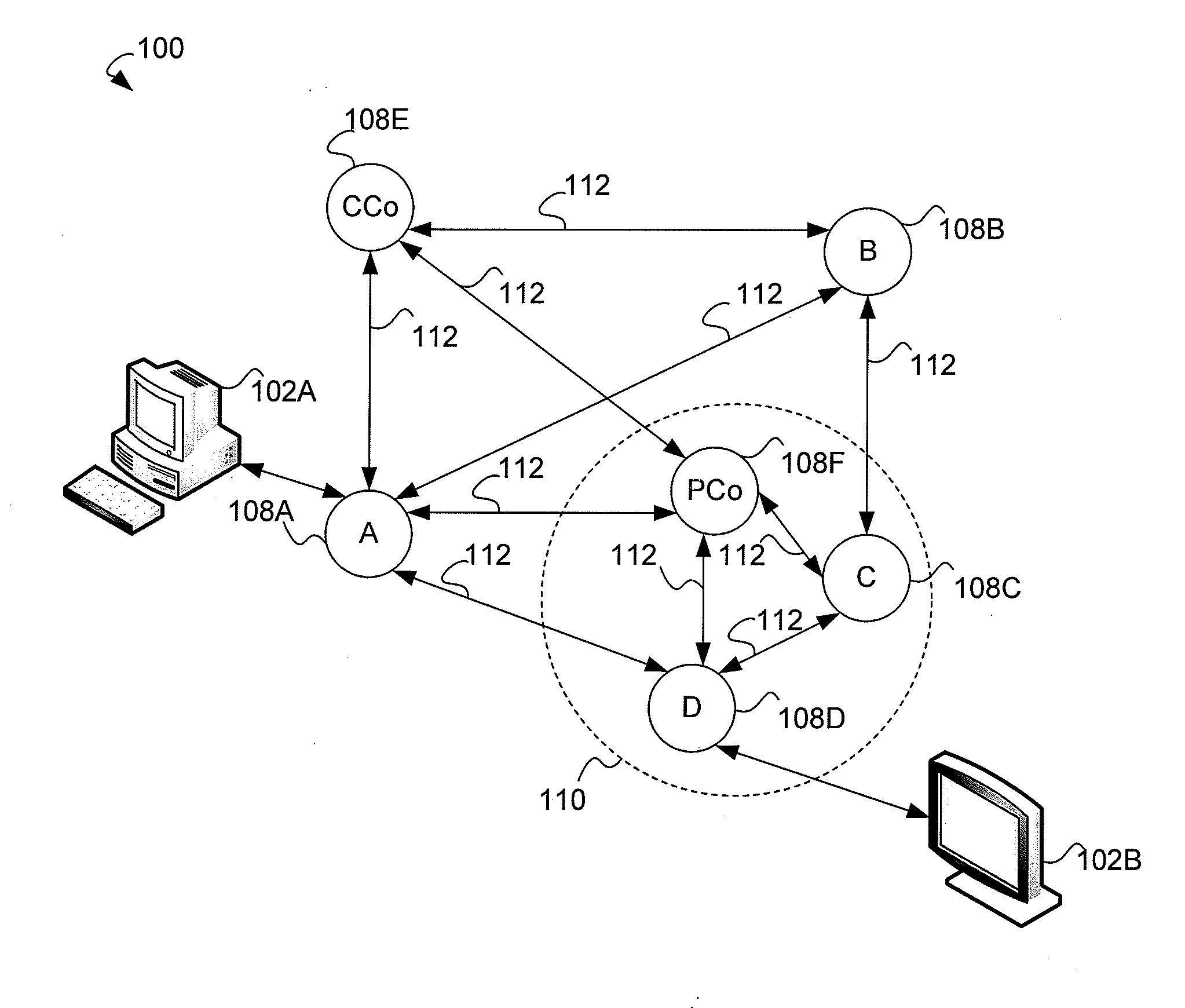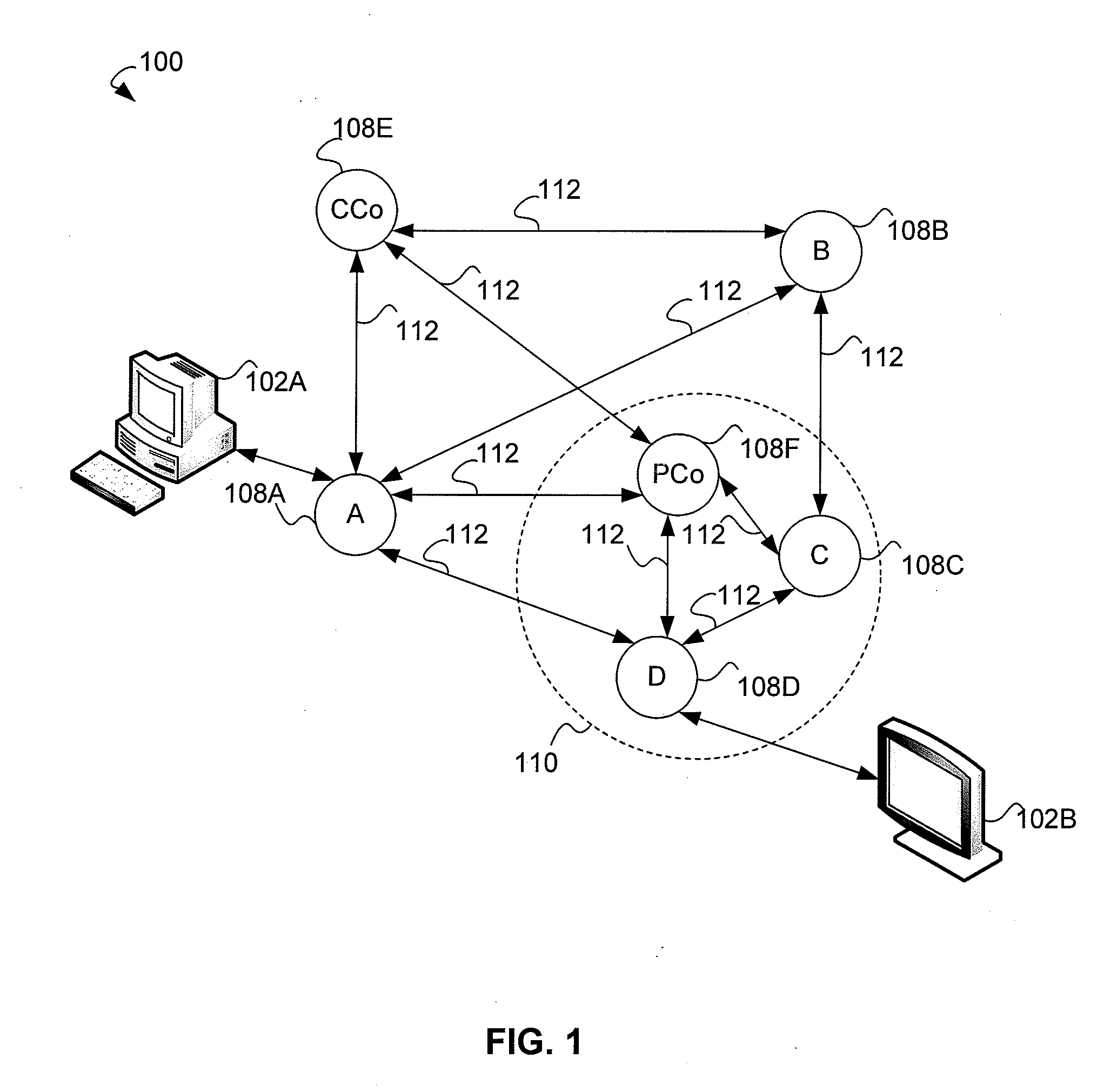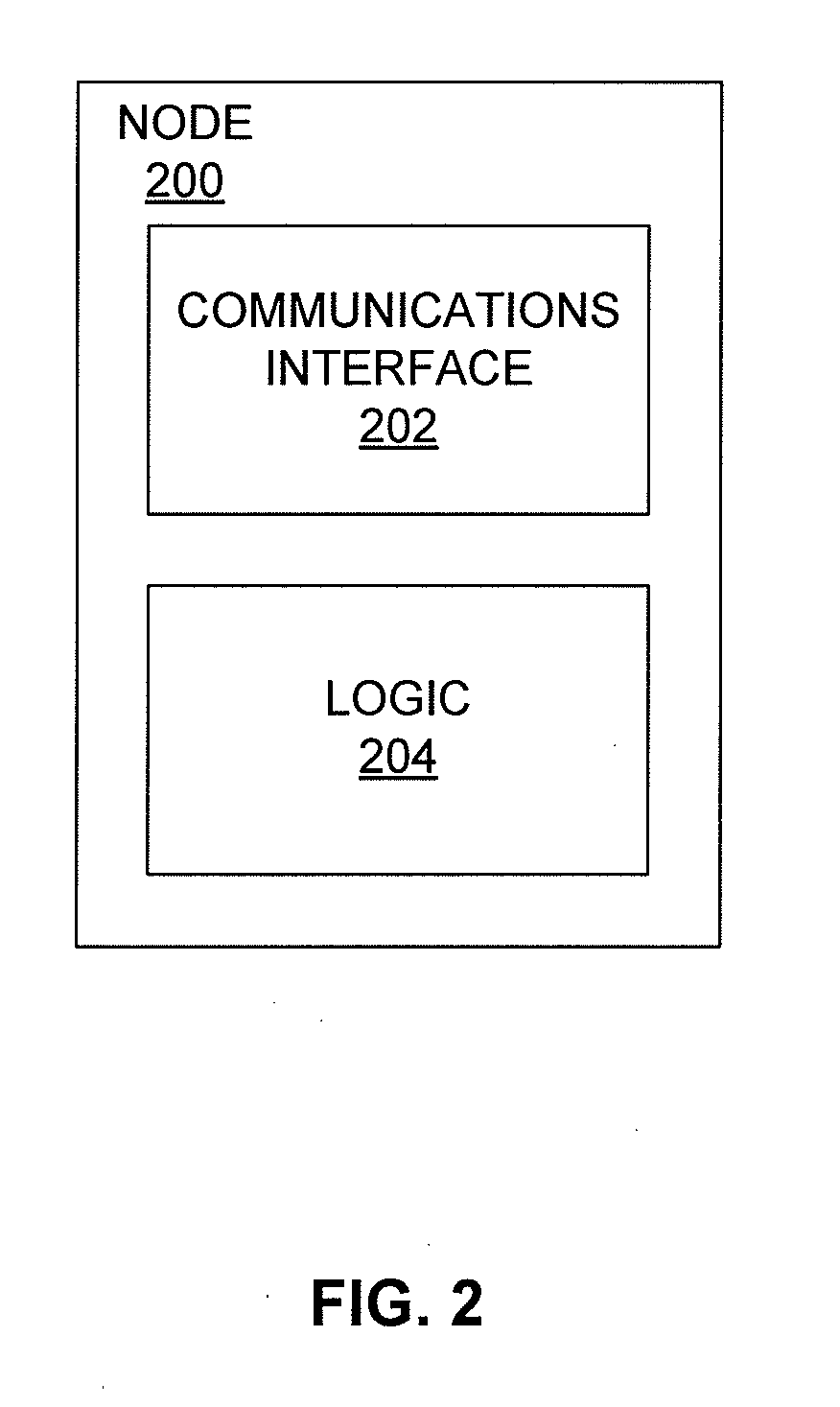Unknown Destination Traffic Repetition
a traffic repetition and destination technology, applied in the field of communication, can solve the problems of spanning tree algorithm, difficult network use of repeaters, and large initialization period of repeaters,
- Summary
- Abstract
- Description
- Claims
- Application Information
AI Technical Summary
Benefits of technology
Problems solved by technology
Method used
Image
Examples
Embodiment Construction
[0022]A mesh network includes one central coordinator node and may optionally include one or more proxy coordinator node. Packet storms, which are similar to broadcast storms, are substantially avoided when a broadcast, unicast or multicast message is directed toward an unknown destination by forwarding messages based on the roles that particular nodes may have when they receive the messages. These roles may include a central coordinator role, a proxy coordinator role, and a non-coordinating role.
[0023]Central coordinator and proxy coordinator roles are assigned to nodes using methods such as those defined in powerline communications standards. These assignments may be dynamic. In a network, one node will be assigned the role of central coordinator node. If all other nodes in the network are not visible to the central coordinator node, one or more nodes may be assigned roles as proxy coordinator nodes. Every node in the network will be in communication with at least one proxy coordi...
PUM
 Login to View More
Login to View More Abstract
Description
Claims
Application Information
 Login to View More
Login to View More - R&D
- Intellectual Property
- Life Sciences
- Materials
- Tech Scout
- Unparalleled Data Quality
- Higher Quality Content
- 60% Fewer Hallucinations
Browse by: Latest US Patents, China's latest patents, Technical Efficacy Thesaurus, Application Domain, Technology Topic, Popular Technical Reports.
© 2025 PatSnap. All rights reserved.Legal|Privacy policy|Modern Slavery Act Transparency Statement|Sitemap|About US| Contact US: help@patsnap.com



